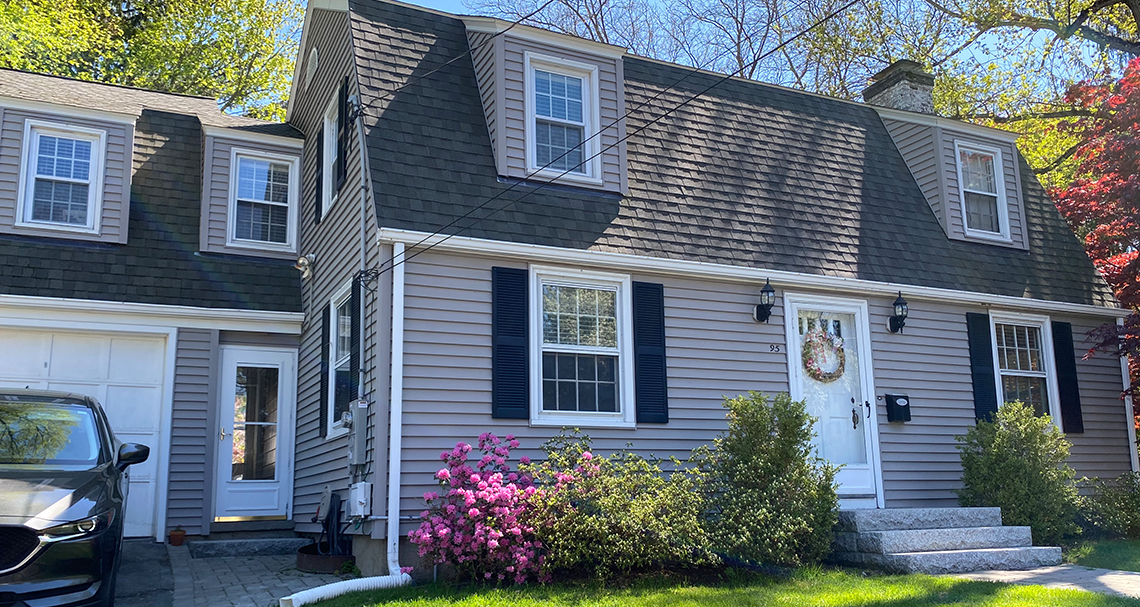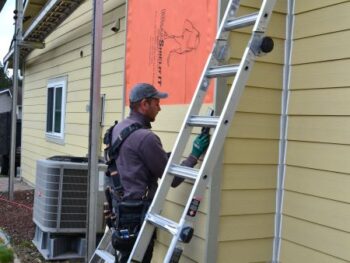Trusted Morris Siding Contractor for Durable and Affordable Home Siding
Trusted Morris Siding Contractor for Durable and Affordable Home Siding
Blog Article
The Vital Overview to the Various Kinds Of House Siding and Their One-of-a-kind Benefits
In the world of home renovation, picking the right exterior siding is a vital choice that influences both visual charm and practical performance. With so many options to consider, which house siding product really stands out for your particular project?
Timber Home Siding
Wood exterior siding, a popular selection for property exteriors, offers a classic visual that combines natural elegance with architectural integrity. This home siding material is readily available in various designs, consisting of clapboard, roof shingles, and board-and-batten, allowing homeowners to tailor their appearance to match their design choices. Wood siding is commonly crafted from long lasting species such as cedar, redwood, or pine, which are understood for their resilience and capability to endure ecological stressors.
Among the primary advantages of wood home siding is its outstanding insulation homes, which can add to energy performance and lower home heating costs. Furthermore, timber exterior siding is biodegradable, making it an eco-friendly choice when sourced sustainably. Regular upkeep, including painting or discoloration, can prolong its life expectancy and enhance its look, allowing home owners to protect the natural beauty of the wood.
However, possible drawbacks consist of sensitivity to insects, rot, and climate damages, necessitating adequate therapy and upkeep - morris siding contractor. In spite of these issues, when appropriately cared for, timber home siding can offer a beautiful and resilient service that improves the personality of a home while using a cozy, welcoming atmosphere

Vinyl Siding
Plastic exterior siding has actually emerged as a leading selection for property owners looking for a low-maintenance exterior alternative that integrates resilience and price. This flexible product is crafted from polyvinyl chloride (PVC), making it resistant to numerous climate condition, including wetness and UV rays. As a result, vinyl house siding does not warp, rot, or fade, ensuring long-lasting visual appeal.
Among the main benefits of vinyl siding is its substantial variety of colors and designs, enabling homeowners to accomplish the wanted search for their property without the need for regular repainting. In addition, vinyl exterior siding is very easy to mount, which can considerably lower labor prices during construction or restoration tasks.
Plastic siding likewise contributes to power effectiveness. Lots of alternatives feature insulation backing, which improves thermal performance, assisting to preserve comfy interior temperature levels and possibly decreasing energy bills. Moreover, its smooth surface area promotes easy cleansing, calling for only periodic washing with a garden hose pipe to remove dirt and debris.
Fiber Cement Siding
Fiber cement exterior siding has acquired traction among home owners and contractors alike due to its amazing mix of longevity and aesthetic versatility. Made up of a mixture of cellulose, cement, and sand fibers, this home siding choice is engineered to hold up against extreme weather problems, consisting of high winds, heavy rainfall, and temperature variations, making it a resilient choice for household exteriors.

One of the main advantages of fiber cement house siding is its resistance to parasites, such Going Here as termites, and its non-combustible nature, offering boosted fire security. morris siding contractor. Additionally, it is readily available in a broad range of appearances, styles, and colors, allowing house owners to attain their desired aesthetic without giving up efficiency
Another advantage is its low upkeep requirements; fiber cement home siding typically needs paint or discoloration every 5-10 years, which is much less frequent than other products. In addition, its long life adds to a lower general expense of possession, as it reduces the requirement for regular fixings or substitutes.
Ultimately, fiber concrete siding represents a superb investment for those seeking a resistant, attractive, and flexible outside option, integrating both form and function to enhance the home's curb appeal.
Metal Exterior Siding
The allure of metal siding lies in its durable durability and modern visual allure, making it a popular selection for modern design. Offered in materials such as aluminum and steel, metal siding supplies a variety of finishes and shades, permitting home owners to accomplish an individualized look that enhances their style vision.

Power performance is an additional substantial benefit, as several steel house siding items are made with insulation alternatives that aid control indoor temperatures. This can cause reduced power prices gradually. Furthermore, metal exterior siding is typically recyclable, making it an ecologically friendly choice for sustainability-minded homeowners.
The installment procedure for metal siding can be relatively uncomplicated, causing a quicker turnaround time for construction tasks. On the whole, metal siding incorporates capability and style, making it a practical alternative for those seeking a enduring and aesthetically attractive outside surface.
Block and Rock Exterior Siding
Block and stone exterior siding attracts attention as an ageless choice that boosts the aesthetic beauty of any type of home. Recognized for their longevity and low upkeep, these materials provide a remarkable roi while boosting the property's visual appeal. Offered in various shades, textures, and patterns, block and rock can be tailored to suit check my reference varied architectural styles, from standard to modern.
Among the main benefits of brick and rock siding is their power efficiency. Both products possess natural protecting residential or commercial properties that assist manage interior temperatures, potentially decreasing cooling and heating prices. In addition, they offer exceptional fire resistance compared to other home siding alternatives, adding to boosted safety look at this site and security.
Another benefit is their longevity. Brick and stone can last for decades, often requiring marginal upkeep beyond occasional cleansing. Unlike timber exterior siding, they are invulnerable to parasites and rot, ensuring a long-lasting exterior that withstands the elements.
Conclusion
In recap, the option of house siding significantly influences a home's visual allure, energy effectiveness, and maintenance requirements. Each kind of house siding-- whether timber, vinyl, fiber steel, concrete, or brick and stone-- offers unique advantages customized to various homeowner choices and ecological conditions. Understanding these alternatives allows informed choices that improve both the sturdiness and visual beauty of property exteriors. Inevitably, selecting the best house siding is crucial for accomplishing a balance in between performance and layout in property design.
One of the primary advantages of wood house siding is its outstanding insulation properties, which can contribute to power efficiency and reduced home heating costs. Furthermore, timber siding is biodegradable, making it an ecologically pleasant option when sourced sustainably.One of the primary advantages of steel siding is its resistance to various ecological variables.Power efficiency is one more considerable benefit, as many metal home siding items are made with insulation options that aid regulate indoor temperatures. Each type of house siding-- whether timber, plastic, fiber metal, brick, or cement and stone-- provides distinct benefits tailored to different house owner choices and ecological conditions.
Report this page